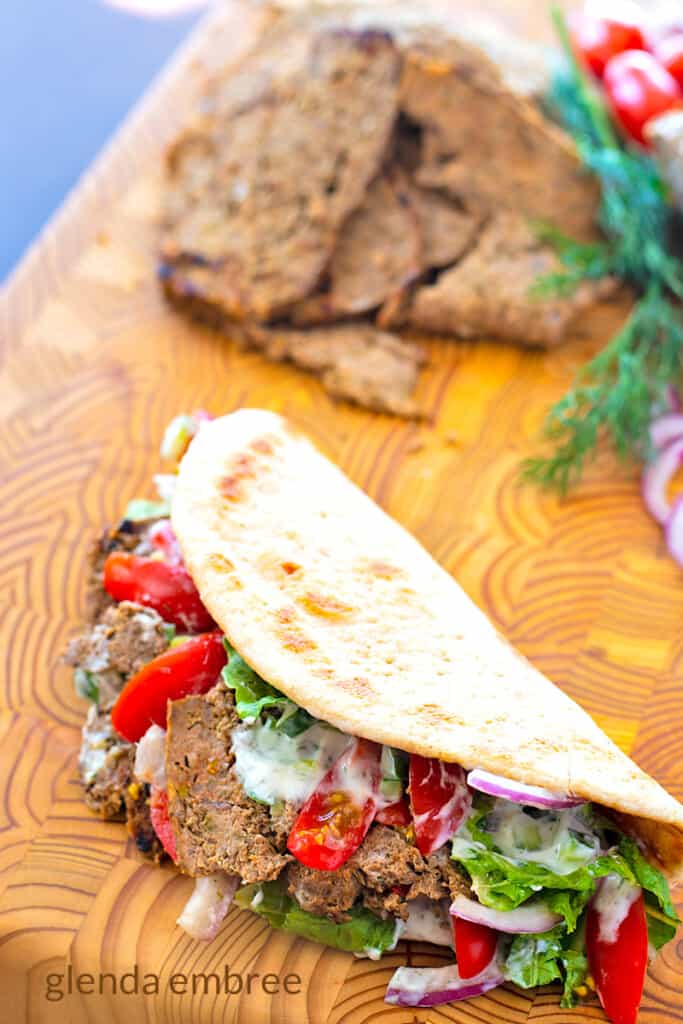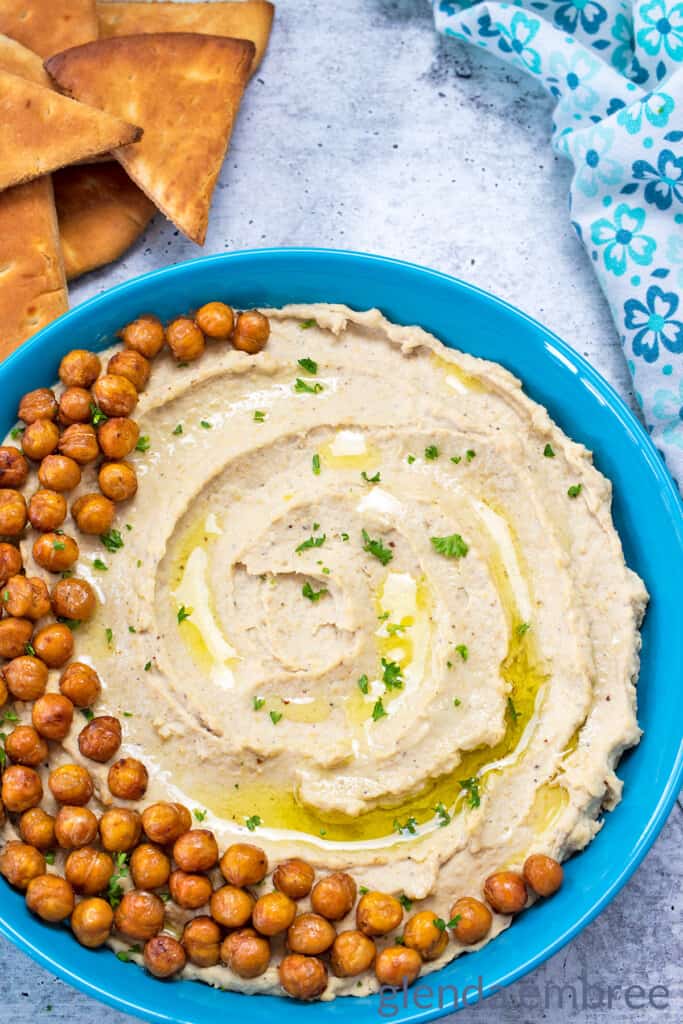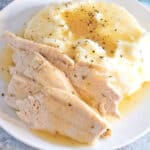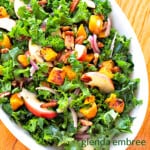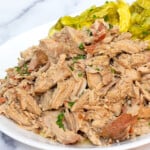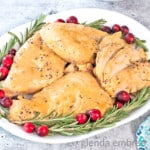My Mediterranean Seasoning blend is a deliciously bold combination of my favorite Mediterranean and Middle Eastern spices. It’s savory, herbaceous, and tangy with the mildest back notes of smoke and barely there spicy heat.
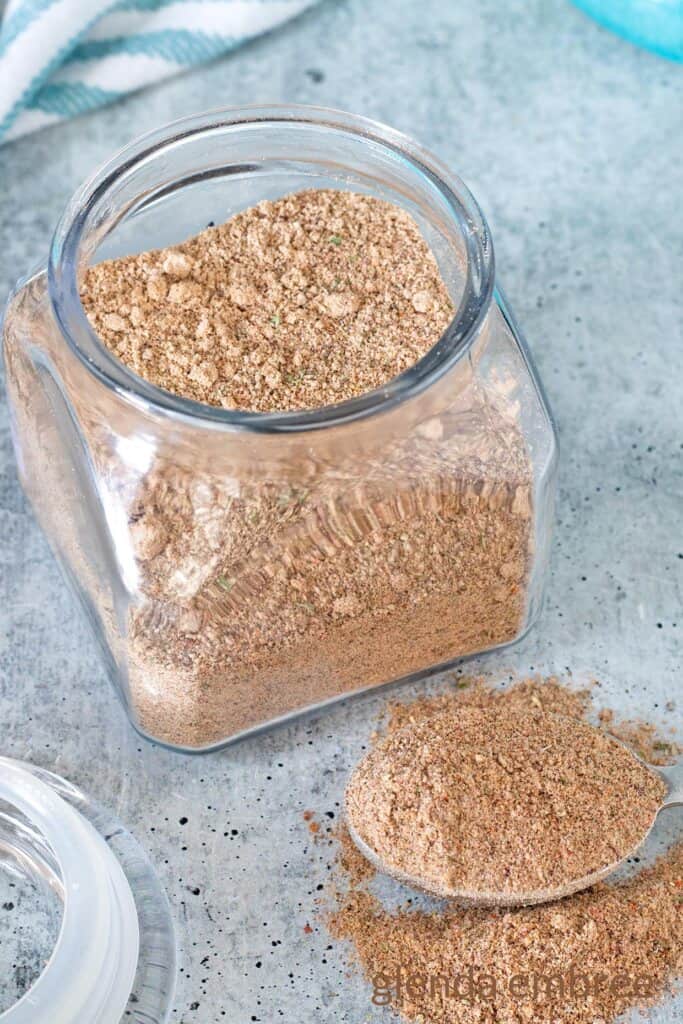
Lamb, venison and “gamey” meats become delectable, mouthwatering dishes with the addition of this delicious blend of Mediterranean herbs. We happen to love it with pork, turkey, vegetables, and more, too.
Mediterranean or Middle Eastern?
Generally speaking, the Middle East is comprised of the lands around the Southern and Eastern shores of the Mediterranean Sea, but also includes those along the Red Sea and the Persian Gulf. It could include the Arabian Peninsula, Iran, North Africa, and other sea-bordering countries, as well.
Mediterranean countries encompass parts of France, Italy, Portugal, and Spain as well as all of Greece, Malta, and Cyprus. Israel, Egypt, Palestine, Syria, Libya, Morocco, and more fall under that same Mediterranean umbrella.
They are a melting pot of cuisines. And while some are distinctive to either Middle Eastern or Mediterranean cooking, many seasonings, ingredients, and dishes are common to both.

Both cuisines enjoy flatbreads, vegetables, fruit, whole grains, and healthy fats. They both incorporate fish into their diets.
Protein choices can vary quite a bit in the two cuisines and dishes cooked in either region will reflect what is in-season and regionally available. Middle Eastern cooking adds more legumes and lentils. Though again, you will definitely find crossover in Mediterranean cooking. The Mediterranean is also known for pasta which isn’t often used in Middle Eastern kitchens.
The love of flavor, seasoning, and spice is apparent in both cuisines, however. And often those seasonings are the same for both regions.
The Ingredients
Yes. This is a long list. I promise that with the exception of three, the herbs and spices in this list are common everyday pantry items. I can get them off the shelf at Walmart or our small-town grocery store.
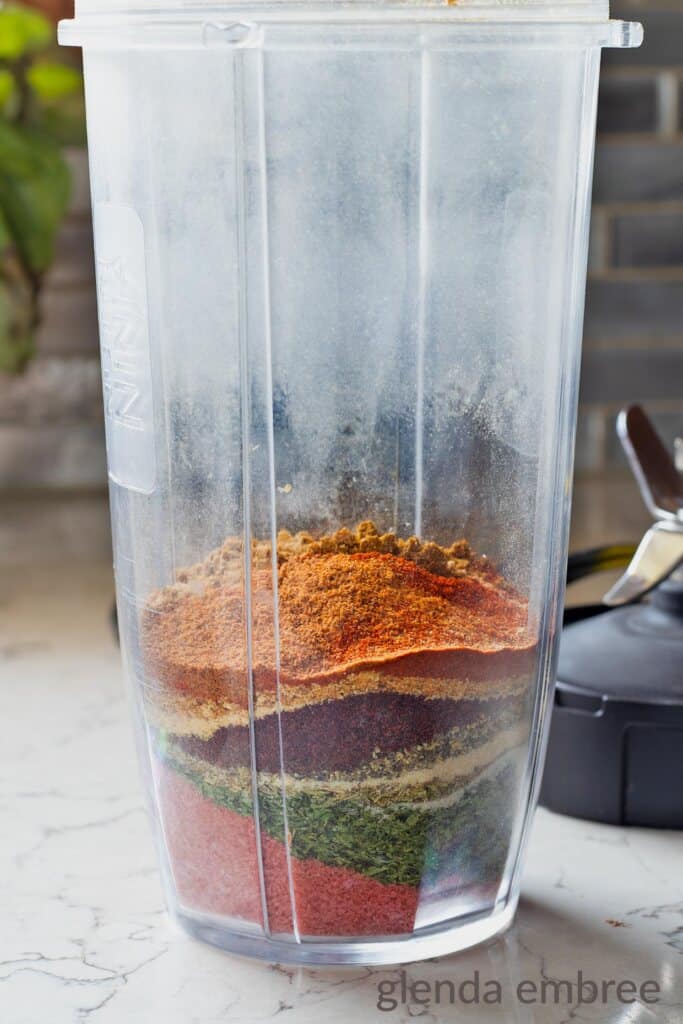
- Sea Salt, finely ground
- Dried Parsley
- Ground Sumac – New to you, I know. But trust me. You’ll use it in so many things. Like my homemade Gyro Meat recipe, Hummus, and Shirazi Salad.
- Sugar
- Dried Rosemary
- Ground Sage
- Ground Coriander
- Onion Powder
- Black Pepper
- Garlic Powder
- Dried Oregano
- Thyme
- Aleppo Pepper Flakes – Yes, it may be unfamiliar. It’s common in Middle Eastern cooking and has a mild heat that comes on slowly. I love it!
- Dried Orange Peel – May or may not be familiar. I actually buy it off the shelf in the spice aisle at Walmart.
- Smoked Paprika
- Cumin
- Nutmeg
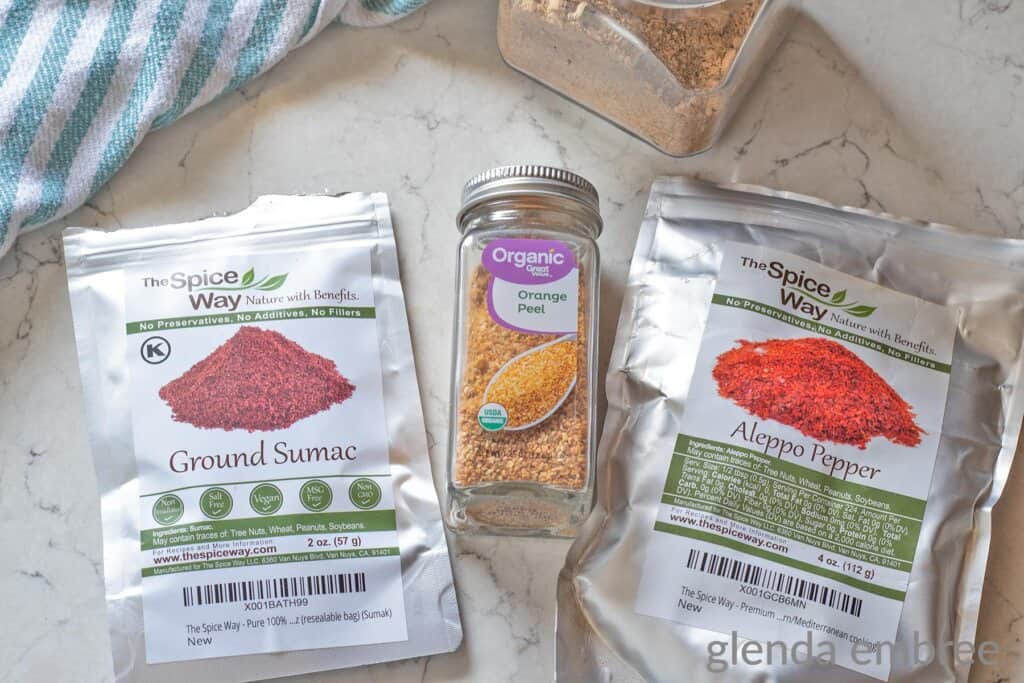
What is Sumac?
Sumac is a delicious spice that is common in Middle Eastern cooking.
It is the dried and ground fruit of the sumac shrub. It adds a citrus-like tang to dishes. And, it’s great on meats, in salad dressings, in soups, stews or on vegetables.
It adds a delicious zing to my creamy hummus recipe! It’s not easy to find in my small-town market, so I usually order from Amazon [affiliate link]. But, if you have good access to international foods in your store, it’s probably available.
You could omit it if you like, but I think it adds another dimension to the flavor of the seasoning blend that will make it like no other Mediterranean seasoning you’ve ever had.
Even though it is a newer spice in my pantry, I find that I use it more and more to brighten flavors in new recipes. I use it in my Homemade Gyro Meat and in Roasted Garlic Hummus.
Aleppo Pepper and Making Substitutions
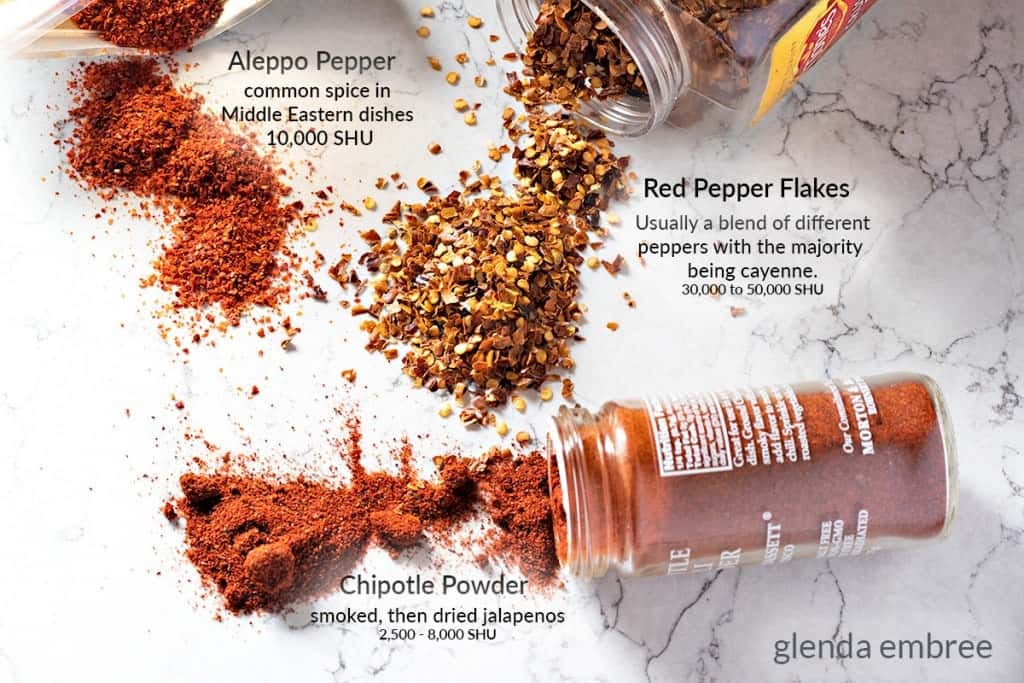
It’s been a while since we’ve discussed substituting one pepper for another. Fresh or dried, you need to understand the heat level of the peppers a recipe calls for and the heat level of the ones you’re subbing in.
Those heat levels are wildly different in the dried chili pepper powders and flakes that are available. So, when you cook, you need to do a little research and have good information about the ingredients you’re using.
Today, those ingredients are the dried peppers you’ll use to make Mediterranean Seasoning. And I’ll save you a little research time by sharing the information I have.
Knowing the heat ranges of the peppers will help you determine how to make substitutions IF it’s absolutely necessary.
To have a flavor profile that gives the same level of flavor and heat as my version, you’re going to want to do your best to use the ingredients I’ve used.
I bought Aleppo Pepper [affiliate link] online. If you live in a larger community than me, your market probably carries it.
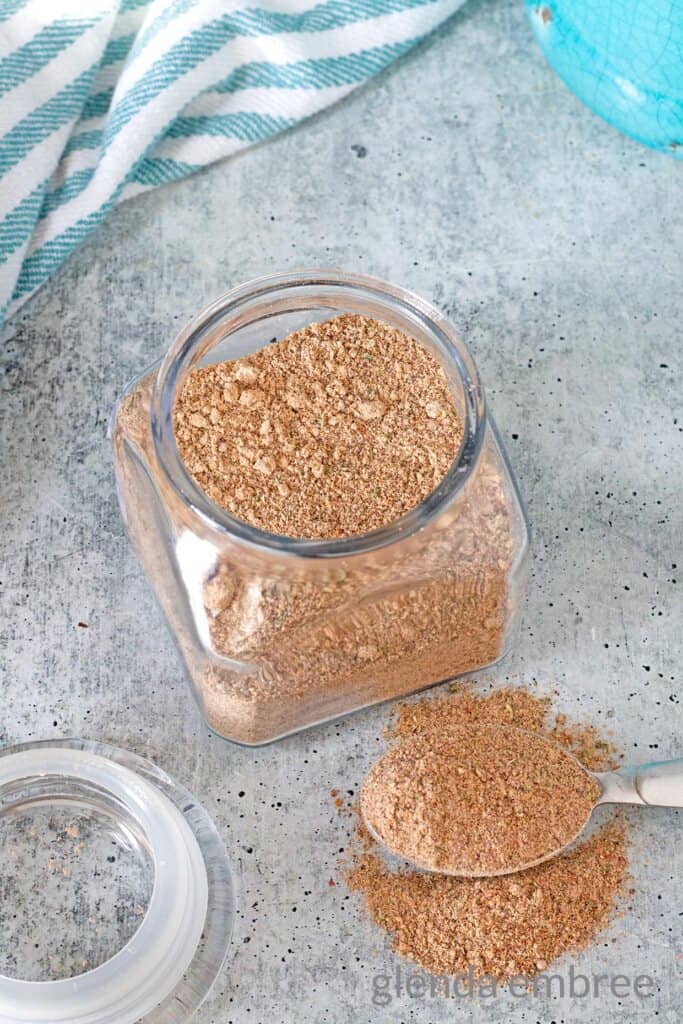
Understanding the Heat Level of Chili Powders
The heat of peppers is registered on a scale known as the Scoville Scale. The Scoville Scale measures the heat level in SHU (Scoville Heat Units). Even then, it usually falls in a range, rather than a specific number. Where the peppers are grown and the weather there can affect where they fall within that heat range.
- Cayenne Pepper comes in HOT at 30,000 to 50,000 SHU.
- Aleppo Pepper comes in at 10,000 SHU.
- Chipotle Pepper comes in between 2,500 and 8,000 SHU.
- Chili Powder comes in between 500 and 1500 SHU.
When making substitutions for peppers, cooks often grab cayenne or chili powder thinking they can just swap them in for the peppers in a recipe. It’s natural. They’re familiar ingredients and are usually in most kitchen pantries.
Looking at the chart above, though, you can see that there would be a vast difference between using 1 teaspoon of cayenne vs 1 teaspoon of chili powder, or Aleppo and chipotle powders. If the ingredient you will use is 5 times hotter than what is called for, you will want to adjust the amount you use to compensate for that.
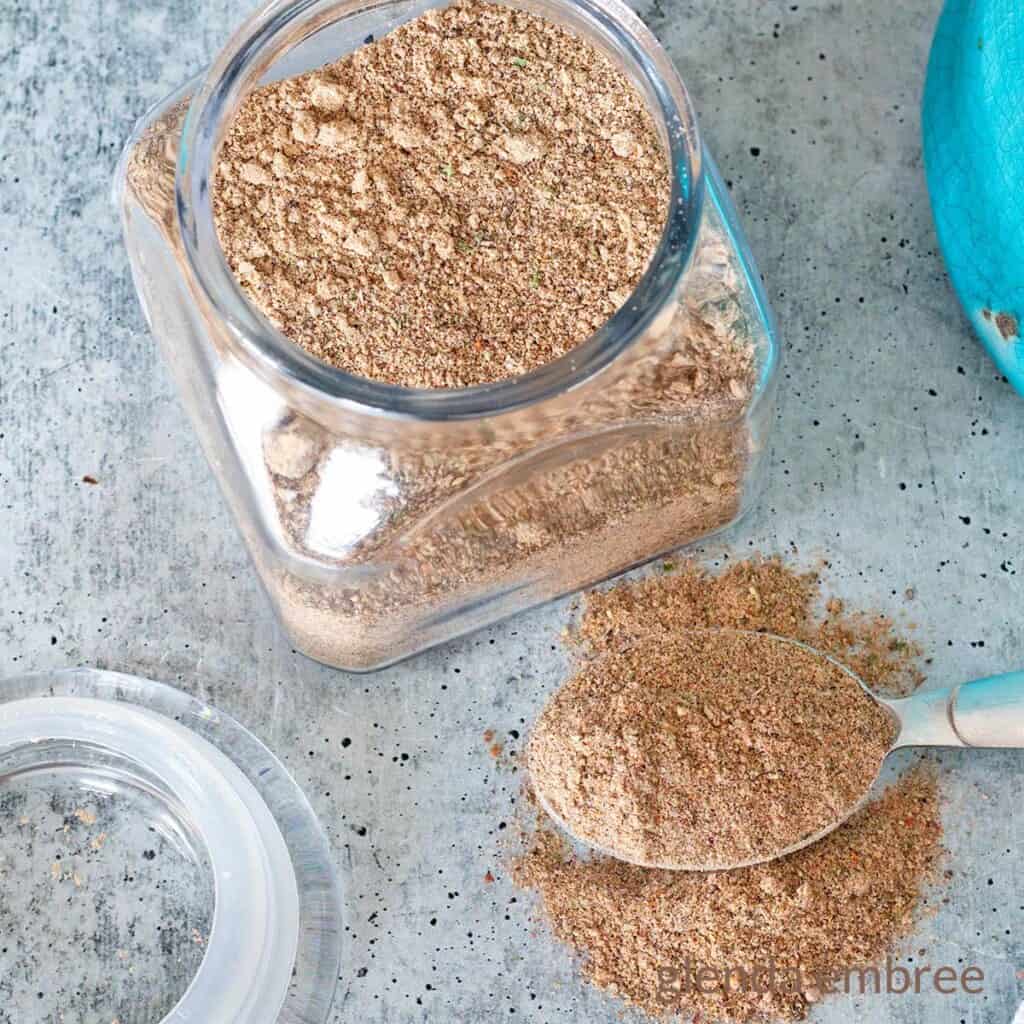
Seasoning Blends and Tradition
This Mediterranean Seasoning blend combines LOTS of herbs and spices, but with the exception of three, I’m guessing most are already in your pantry.
In so many cultures, spice blends are different depending on where you are in that country. Blends are often regionally specific due to availability.
And, in the Middle East, India, and other non-Western countries you will find that those spice blends are even more personal. They’re specific to an exact family and the recipe is often closely guarded, being handed down through many generations in that same family.
We don’t do that in the United States. We don’t create complex signature blends of herbs and spices that make dishes uniquely our own. We’re missing out, I think.
Rich, complex flavors can only be achieved through blending and experimenting with the abundance of seasonings available to us. Find herbs and spices that complement one another and that you love and you’ll always have the foundations of something extraordinary.
Create your own seasoning blends, like my Mediterranean Seasoning, and you’ll be well on your way to exceptionally flavored dishes, and a seasoning tradition to pass down in your own family!
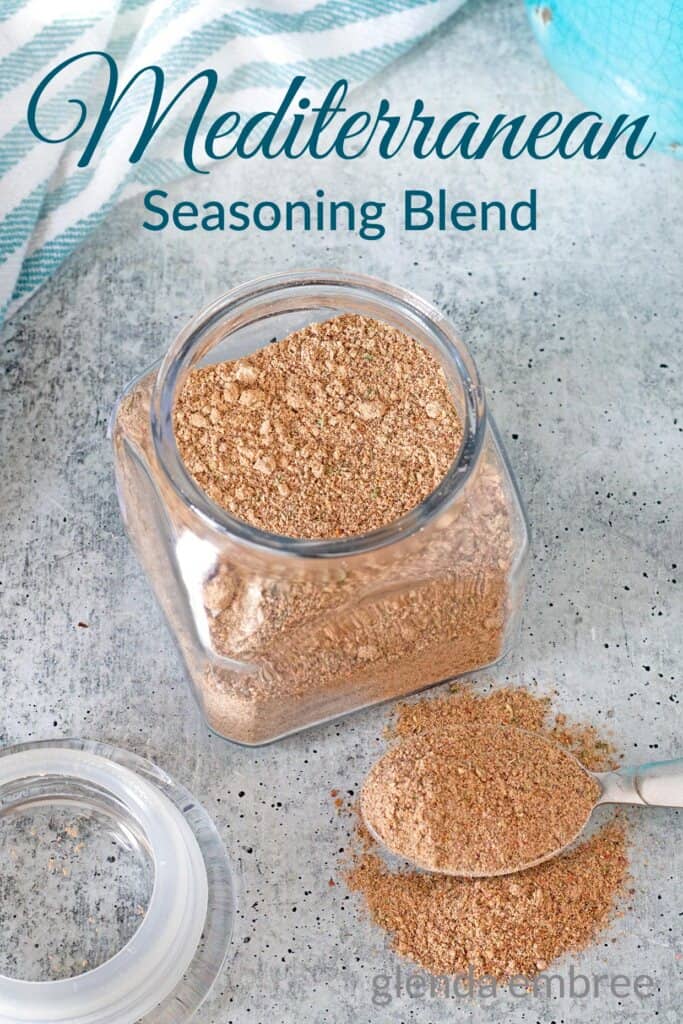
Authentically Me & What’s In a Name?
So, I have been testing and perfecting this blend for more than a year, now. It’s my first signature blend that steps outside the box and delivers flavors that are uniquely my own. And it’s scrumptious!
I call it Mediterranean Seasoning because it incorporates so many of the herbs and spices from that region.
I considered calling it Lamb Seasoning because it’s so incredibly delicious on lamb. But, it’s great with other proteins and in salad dressings and dips, too. So, that seemed too limiting.
And finally, it does incorporate some Middle Eastern herbs and spices, as well.
So, because of the crossover in both cuisines, I decided to simplify and call it Mediterranean Seasoning, with the caveat that it is authentically me and not authentically anything else.
When to Use Mediterranean Seasoning
My Mediterranean Seasoning works beautifully and holds its own with proteins that would be considered “gamey”. Think lamb, venison, and goat.
This blend is essentially all the spices I use in my homemade Gyro Meat recipe. So, if you have it on hand, sub it into that recipe in place of the long list of seasonings.
But, I also enjoy using my Mediterranean Seasoning blend with pork and even turkey. I have yet to try it on fish, but it may be what finally convinces me that I CAN like it. lol
Plus, this seasoning that blends Middle East and Mediterranean flavors is delectable in some of my favorite dips, sauces, and salad dressings, too. It’s fantastic in hummus and tzatziki. You will even love it on roasted vegetables.
I’ve been testing it on so many different foods and looking at how it could work in some new recipes. I saw this delish-looking Greek Salmon Salad recipe over on Nutritious Deliciousness the other day. And I’m thinking of subbing in this blend for the seasoning on the salmon. I think it would be fabulous!
I’ve used this Mediterranean seasoning for grilling, air frying, and roasting. Even in the slow cooker, this scrumptious seasoning packs a flavorful punch.
My unique Mediterranean Seasoning blend is absolutely delicious and because it DOES blend ingredients and flavors from different, but related, cooking styles it’s incredibly versatile, too.
I think you’re going to love it!

How to Make Mediterranean Seasoning
- Add all the ingredients to a high-speed blender or smoothie blender.
- Pulse and then blend until all the ingredients are fully incorporated and a uniform powder is formed.
- Store Mediterranean Seasoning in an air-tight container and keep it in a cool dark cupboard with all your other herbs, spices, and seasoning blends.
The Recipe
Want to Save This Recipe?
Enter your email & I’ll send you the link so you always have it at your fingertips. Plus, I’ll send a collection of easy recipes to your inbox every Friday!
By submitting this form, you consent to receive emails from Glenda Embree.

Mediterranean Seasoning
- Total Time: 10 minutes
- Yield: 40 teaspoons 1x
- Diet: Gluten Free
Description
My Mediterranean Seasoning is deliciously savory, herbaceous, & tangy with the mildest back notes of smoke & barely there spicy heat. It’s the seasoning of choice for cooking lamb or any “gamey” protein. It’s also fantastic in dips, sauces and salad dressings. Sprinkle it on roasted veggies or even popcorn. DELISH!
Ingredients
- 3 Tablespoons sea salt, finely ground
- 2 Tablespoons dried parsley
- 1 Tablespoon ground sumac
- 1 Tablespoon sugar
- 2 teaspoons dried rosemary
- 2 teaspoons ground sage
- 2 teaspoons ground coriander
- 2 teaspoons onion powder
- 2 teaspoons black pepper
- 1 teaspoon garlic powder
- 1 teaspoon dried oregano
- 1 teaspoon thyme
- 1 teaspoon Aleppo pepper flakes
- 1 teaspoon dried orange peel
- 1 teaspoon smoked paprika
- 1 teaspoon cumin
- 1/2 teaspoon nutmeg
Instructions
- Add all the ingredients to a high-speed blender or smoothie blender.
- Pulse and then blend until all the ingredients are fully incorporated and a uniform powder is formed.
- Store Mediterranean Seasoning in an air-tight container and keep it in a cool dark cupboard with all your other herbs, spices, and seasoning blends.
- Prep Time: 10 min
- Cook Time: 0 min
- Category: Seasonings
- Method: Cold Prep
- Cuisine: American-Mediterranean

